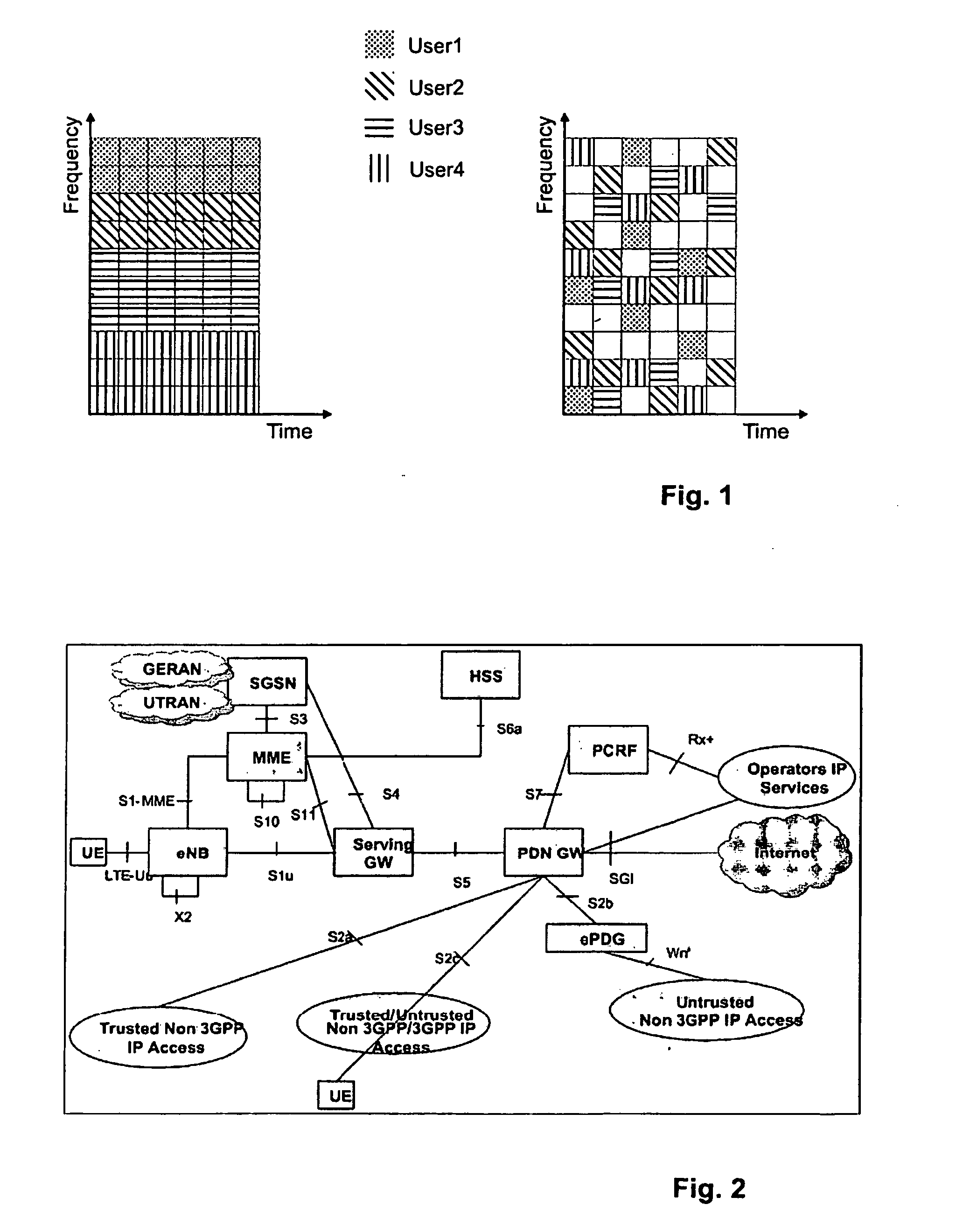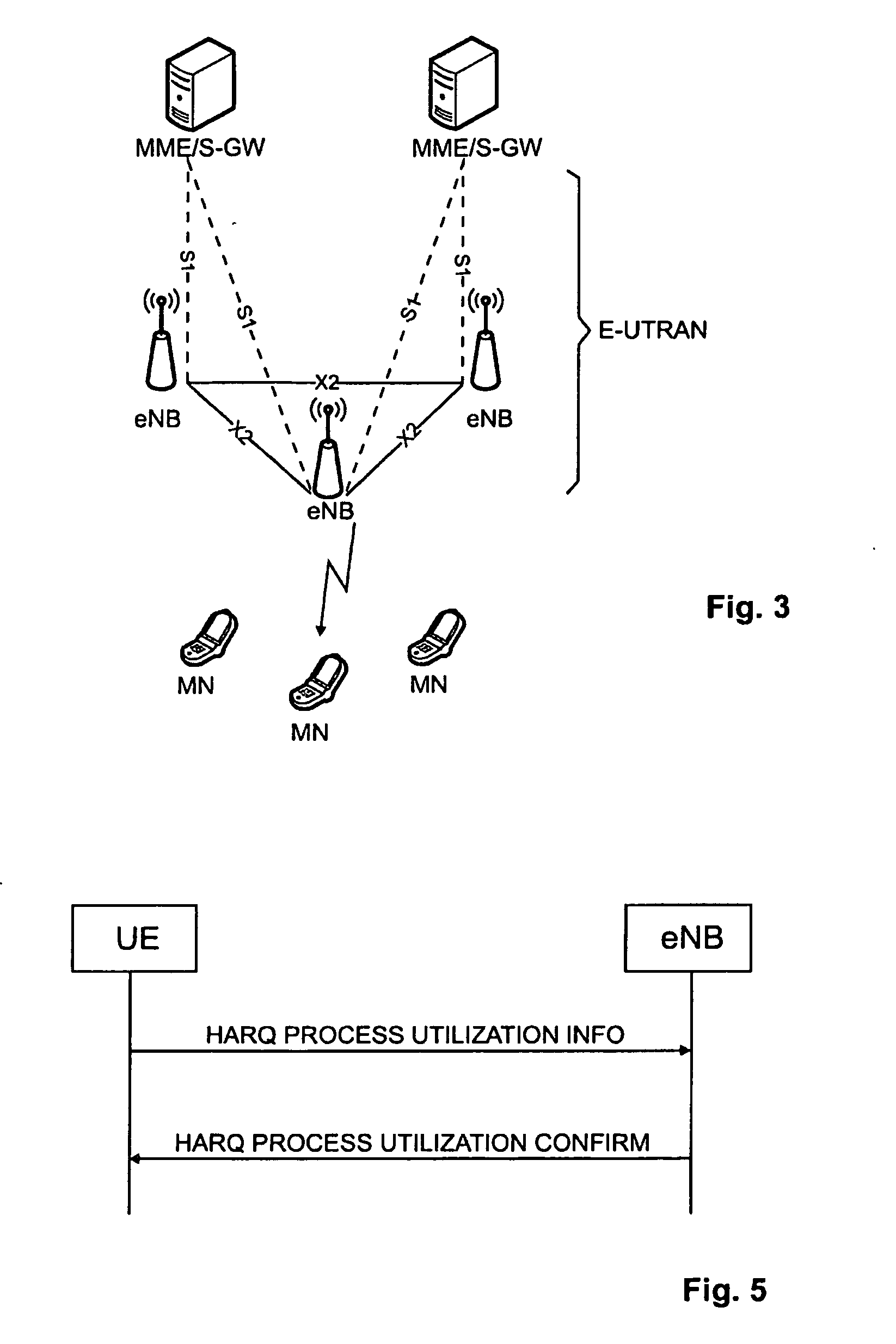Soft-Buffer Management of a Re-Transmission Protocol for Unicast and Multicast Transmissions
a retransmission protocol and multicast transmission technology, applied in multi-channel communication, wireless communication, broadcast with distribution, etc., can solve the problem that the radio control entity is not able to specify a process, and achieve the effect of efficient information about the typ
- Summary
- Abstract
- Description
- Claims
- Application Information
AI Technical Summary
Benefits of technology
Problems solved by technology
Method used
Image
Examples
Embodiment Construction
Definitions
[0099]In the following a definition of a few terms frequently used in this document will be provided.
[0100]A mobile node is a physical entity within a communication network. One node may have several functional entities. A functional entity refers to a software or hardware module that implements and / or offers a predetermined set of functions to other functional entities of a node or the network. Nodes may have one or more interfaces that attach the node to a communication facility or medium over which nodes can communicate. Similarly, a network entity may have a logical interface attaching the functional entity to a communication facility or medium over it may communicate with other functional entities or correspondent nodes.
[0101]A re-transmission protocol supporting soft-combining uses several processes to transmit data packets and store data packets, which could not be decoded correctly, in associated regions of a soft-buffer in a mobile node. Each process is identifie...
PUM
 Login to View More
Login to View More Abstract
Description
Claims
Application Information
 Login to View More
Login to View More - R&D
- Intellectual Property
- Life Sciences
- Materials
- Tech Scout
- Unparalleled Data Quality
- Higher Quality Content
- 60% Fewer Hallucinations
Browse by: Latest US Patents, China's latest patents, Technical Efficacy Thesaurus, Application Domain, Technology Topic, Popular Technical Reports.
© 2025 PatSnap. All rights reserved.Legal|Privacy policy|Modern Slavery Act Transparency Statement|Sitemap|About US| Contact US: help@patsnap.com



